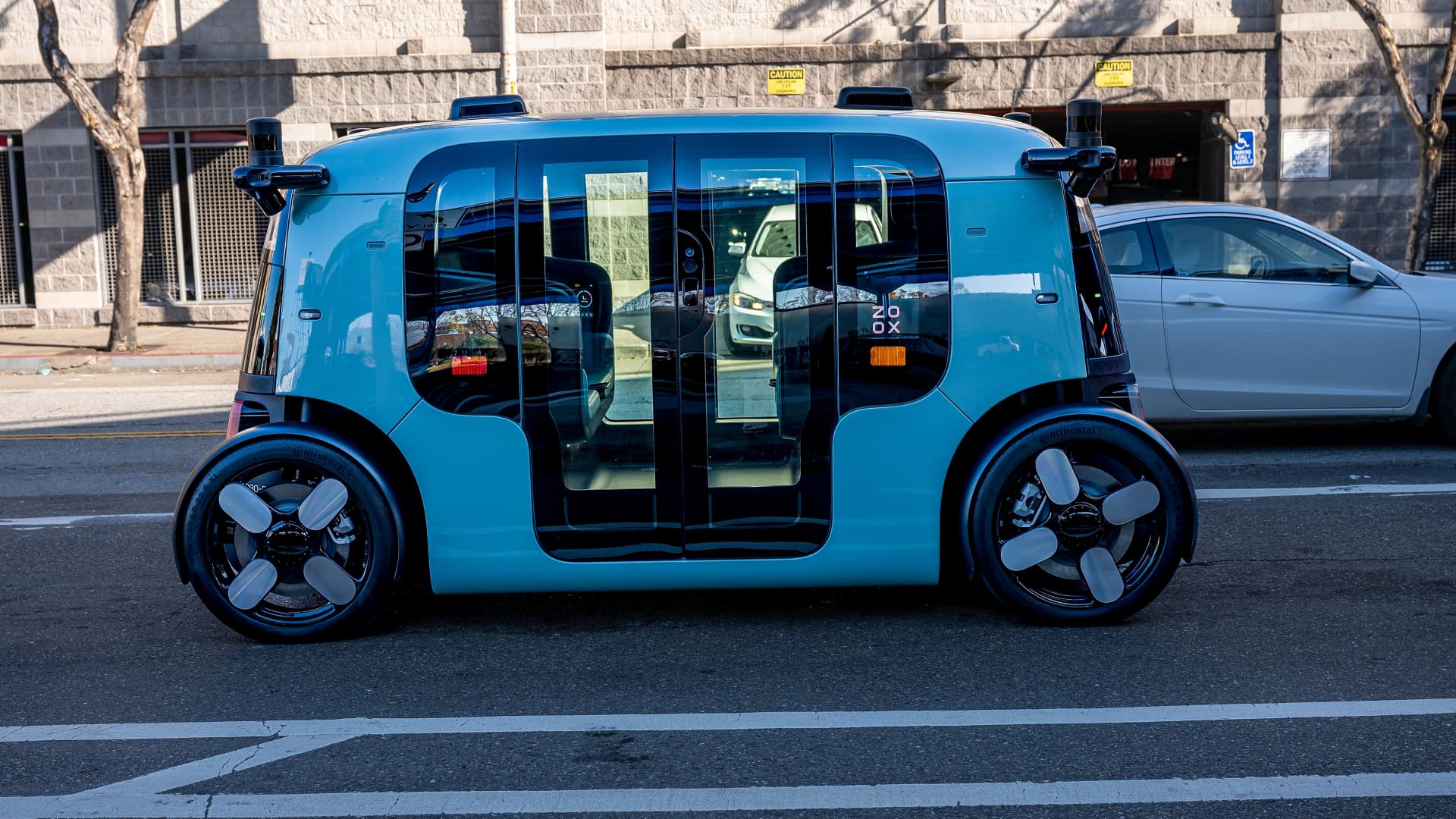Zoox Recall: Unraveling Amazon’s Robotaxi Safety Concerns
The realm of autonomous vehicles is burgeoning, with safety at the forefront of technological advancements. Amazon’s self-driving subsidiary, Zoox, recently experienced a significant setback with a software recall affecting hundreds of its robotaxis. This event has sparked crucial discussions about the safety and reliability of autonomous driving systems.
The Incident and Recall
On April 8, a Zoox robotaxi, unoccupied at the time, collided with a passenger car in Las Vegas. Thankfully, no injuries were reported. This incident prompted Zoox to halt operations temporarily while conducting a comprehensive safety review. The investigation uncovered a defect in the vehicle’s automated driving system (ADS) that could lead to inaccurate predictions of other vehicles’ movements, resulting in abrupt and unexpected braking.
In response, Zoox initiated a recall of 270 driverless vehicles. The recall focuses on vehicles equipped with self-driving software versions released before November 5. Zoox has since developed a software update to rectify the issue, and the recalled software is no longer in use. The National Highway Traffic Safety Administration (NHTSA) closed its investigation into 258 Zoox vehicles, indicating that the necessary corrective actions have been implemented.
Delving into the Technical Issue
The crux of the problem lies within the ADS of Zoox vehicles. The ADS is responsible for perceiving the environment, making driving decisions, and controlling the vehicle. The defect in the recalled software versions could cause the ADS to misinterpret the movements of other vehicles, leading to sudden and unexpected braking. This issue poses a substantial safety risk, as sudden braking can result in collisions, particularly in densely populated urban areas where traffic is unpredictable.
Zoox’s decision to recall the affected vehicles and update the software showcases a proactive approach to safety. By addressing the issue promptly, Zoox aims to prevent potential accidents and maintain public trust in its autonomous driving technology.
Autonomous Vehicle Safety: A Wider Lens
The Zoox recall is not an anomaly. Other autonomous vehicle companies have encountered similar challenges. For example, Waymo recalled over 670 self-driving vehicles last year due to a different issue. These incidents underscore the complexities and challenges of developing and deploying safe autonomous driving systems.
Autonomous vehicles rely on a combination of sensors, cameras, and advanced algorithms to navigate roads. While these technologies have made remarkable progress, they are not foolproof. Factors such as adverse weather conditions, intricate urban environments, and the unpredictable behavior of other road users can present challenges for autonomous driving systems.
Regulatory bodies like the NHTSA play a pivotal role in ensuring the safety of autonomous vehicles. They conduct investigations, establish safety standards, and oversee recalls when necessary. The NHTSA’s closure of the probe into Zoox vehicles suggests that the necessary corrective actions have been taken, and the vehicles are now safe to operate.
The Road Ahead for Autonomous Vehicles
The Zoox recall serves as a reminder that the development of autonomous vehicles is an ongoing process. While significant strides have been made, there is still much work to be done to ensure the safety and reliability of these vehicles. Companies like Zoox must continue to invest in research and development, conduct rigorous testing, and address any issues that arise promptly.
Public trust is vital for the widespread adoption of autonomous vehicles. Incidents like the Zoox recall can erode public confidence, but proactive measures to address safety concerns can help rebuild trust. As the technology continues to evolve, it is crucial for companies to prioritize safety and transparency in their operations.
Ensuring Safety in Autonomous Driving
The Zoox recall highlights several key areas that need attention to ensure the safety of autonomous vehicles:
– Robust Testing and Validation: Companies must conduct extensive testing and validation of their autonomous driving systems under various conditions to identify and mitigate potential issues.
– Transparency and Communication: Open communication with regulatory bodies and the public about safety concerns and corrective actions can help build trust and ensure accountability.
– Continuous Improvement: Autonomous vehicle technology is constantly evolving, and companies must be committed to continuous improvement and innovation to address emerging challenges.
Conclusion: The Imperative of Safety
The Zoox recall underscores the critical importance of safety in the development and deployment of autonomous vehicles. While the incident highlights the challenges faced by the industry, it also demonstrates the proactive measures taken by companies to address these challenges. As we move towards a future where autonomous vehicles become a common sight on our roads, it is essential to maintain a high level of vigilance and prioritize safety above all else. The Zoox recall serves as a reminder that the journey towards fully autonomous vehicles is ongoing, and every step must be taken with caution and care. The future of autonomous driving is promising, but it must be built on a foundation of safety and reliability.

